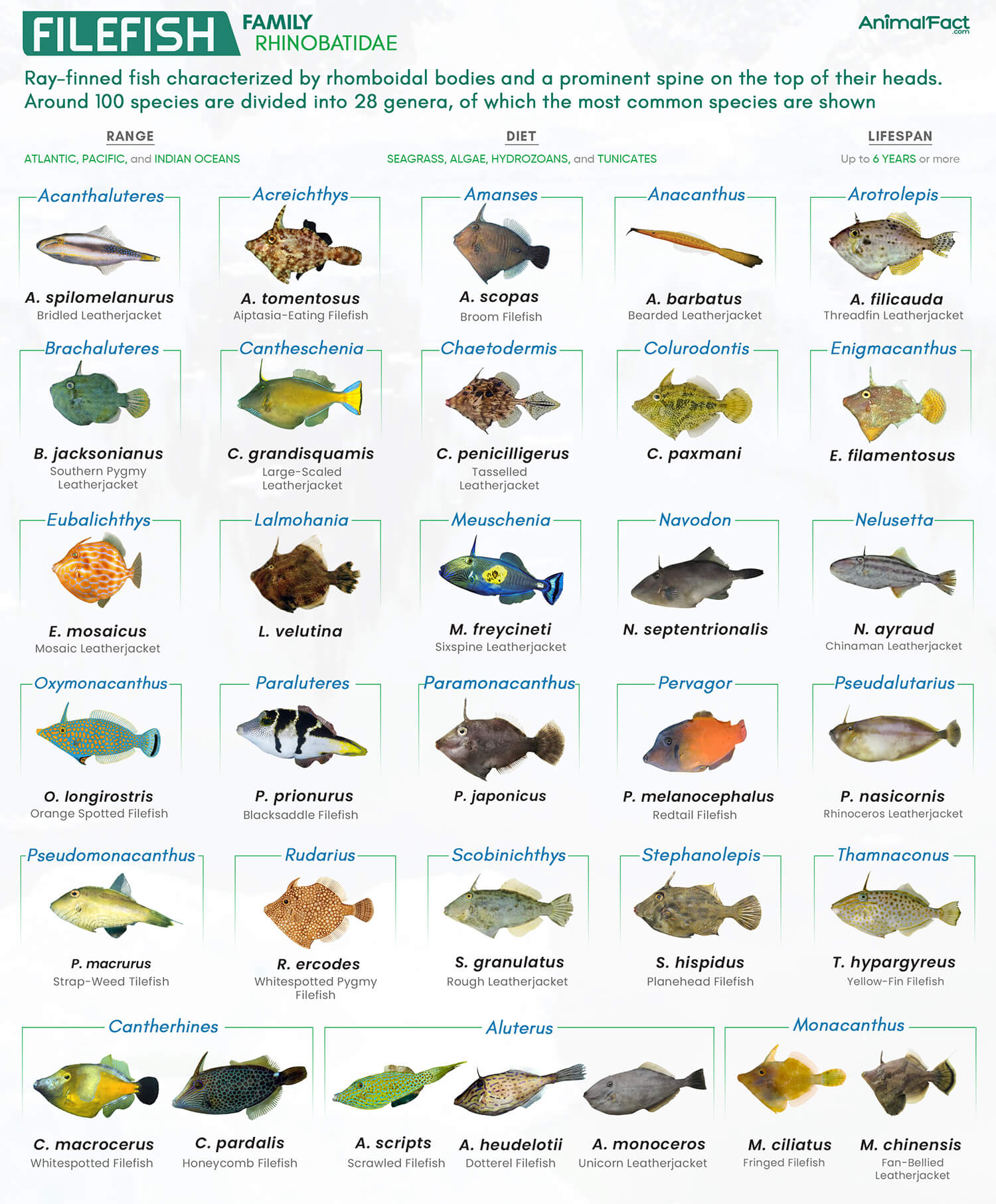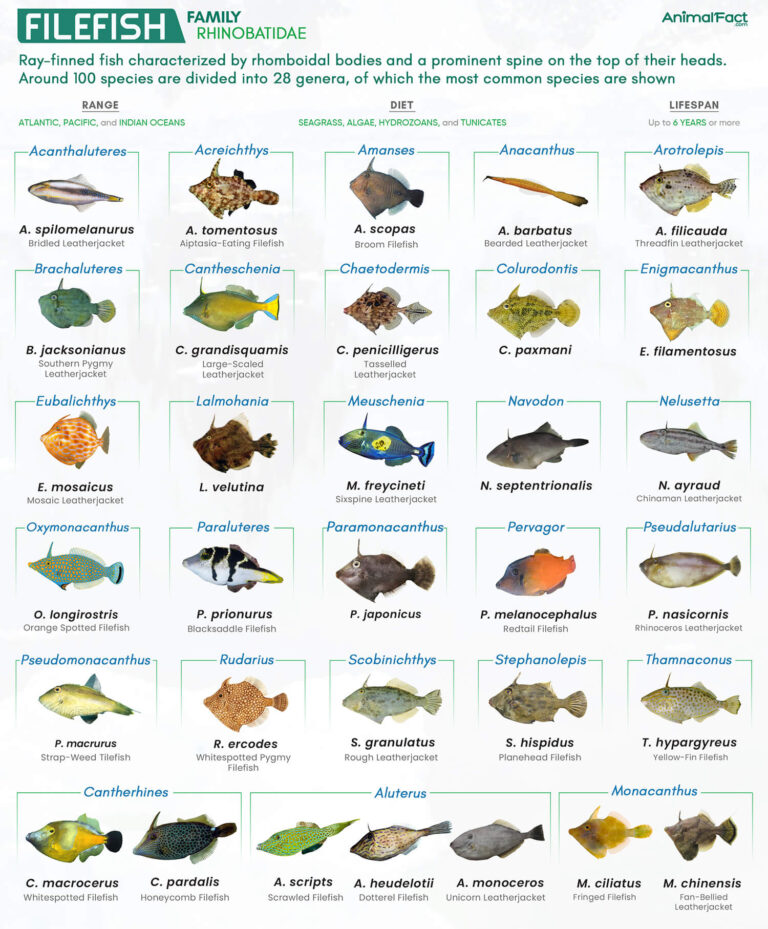


Filefish, also known as foolfish, leatherjackets, or shingles, are ray-finned fish belonging to the family Monacanthidae and are closely related to pufferfish, triggerfish, and trunkfish. They are easily recognized by their rhomboid-shaped bodies and a distinctive spine on top of their heads. Commonly found in lagoons, estuaries, reefs, and seagrass beds of the tropical and subtropical zones, these fish feed on algae, seagrass, and various marine animals, including tunicates and hydrozoans.

On average, most species of the filefish family measure around 24 in (60 cm) in length. However, the largest species, the scrawled filefish (Aluterus scriptus), measures about 43 in (110 cm).
In contrast, smaller species, like the slender filefish (Monacanthus tuckeri) and the whitespotted pygmy filefish (Rudarius ercodes), typically reach only about 2 to 3 in (5 to 8 cm).
Filefish have rhomboidal, laterally compressed, and keeled bodies with soft and simple fins. The pectoral fins are small, and the tail fin is truncated and fan-shaped. On their head are two retractable spines, the first being noticeably larger and more erect than the second.
Their snouts project upwards, and their eyes are located on the top of their heads.
Their sandpaper-like skin, covered in rough, non-overlapping scales with tiny spikes, gives them their name, though some species appear scaleless due to their extremely fine scales.
The small gill openings and elongated pelvic bones create a skin flap or dewlap that terminates at the belly.
They have a terminal mouth with specialized incisors on the upper and lower jaws. The upper jaw contains four teeth in the inner series and six teeth in the outer series, while the lower jaw only has four to six teeth in the outer series.
The name of the family, Monacanthidae, derives from the Greek words monos (meaning ‘one’) and akantha (meaning ‘thorn’), which refer to the prominent spine on the head of these fish.
Currently, there are around 100 species of filefish grouped into 27 genera.
Filefish are found in the Atlantic, Pacific, and Indian Oceans, primarily living in shallow waters with depths no more than 30 m. They also inhabit lagoons and estuaries, where they remain associated with seaward reefs and seagrass beds.
They have diverse dietary choices, ranging from seagrass and algae to small benthic invertebrates like tunicates, gorgonians, and hydrozoans. Some species, like matted filefish, opportunistically feed on coral polyps (corallivores).
These fish live in pairs or small groups and move around with a characteristically sluggish gait. When threatened by a predator, they quickly slip into crevices in the reef.
Although these fish typically survive up to 6 years in the wild, they may live longer in captivity with proper care.
Filefish breed in small groups comprising a single male and two to five females, though the number of females in the group depends on the species and environmental factors, like water temperature, food availability, and habitat conditions.
The females lay demersal eggs in safe depressions at the bottom of the water, which are guarded by the males. The young hatchlings are pelagic and highly susceptible to predation.
They are preyed upon by predatory fish, like tuna and dogfish, as well as some sea birds, such as sooty terns and brown noddies.